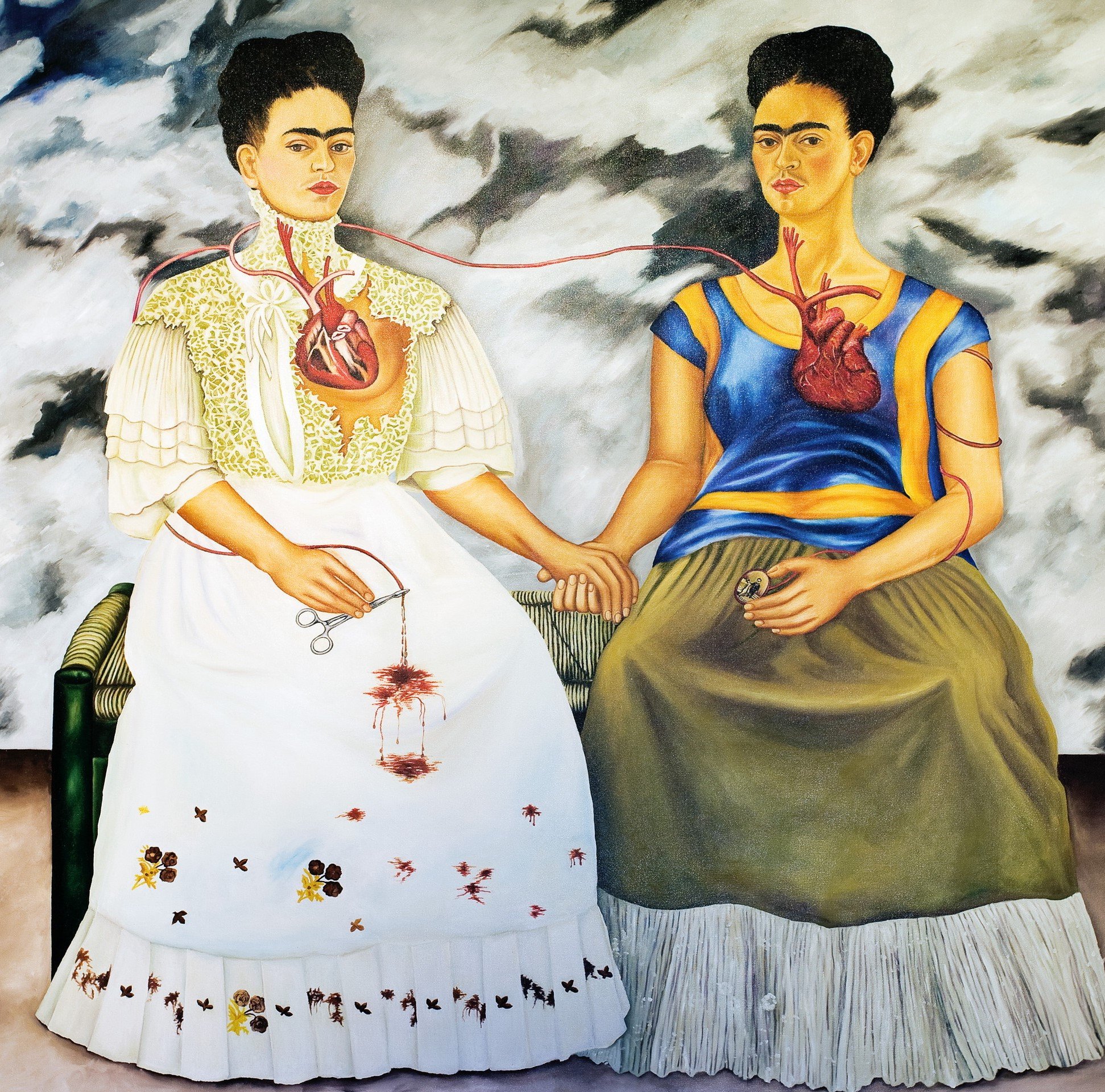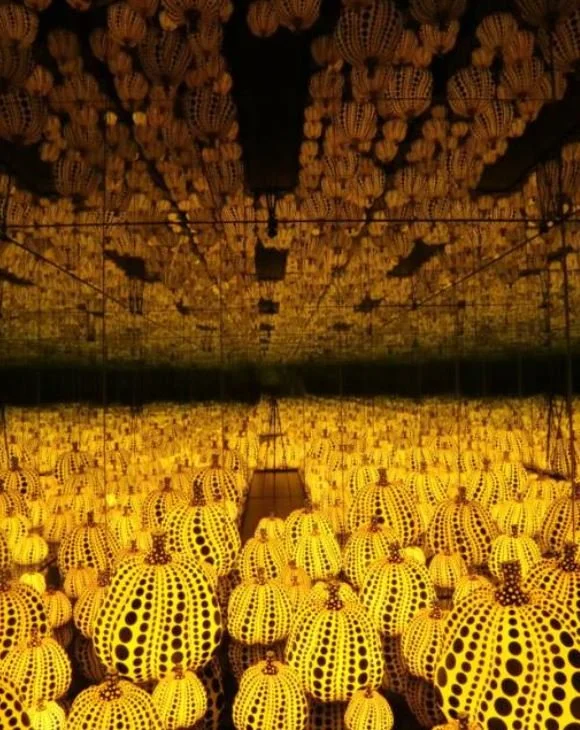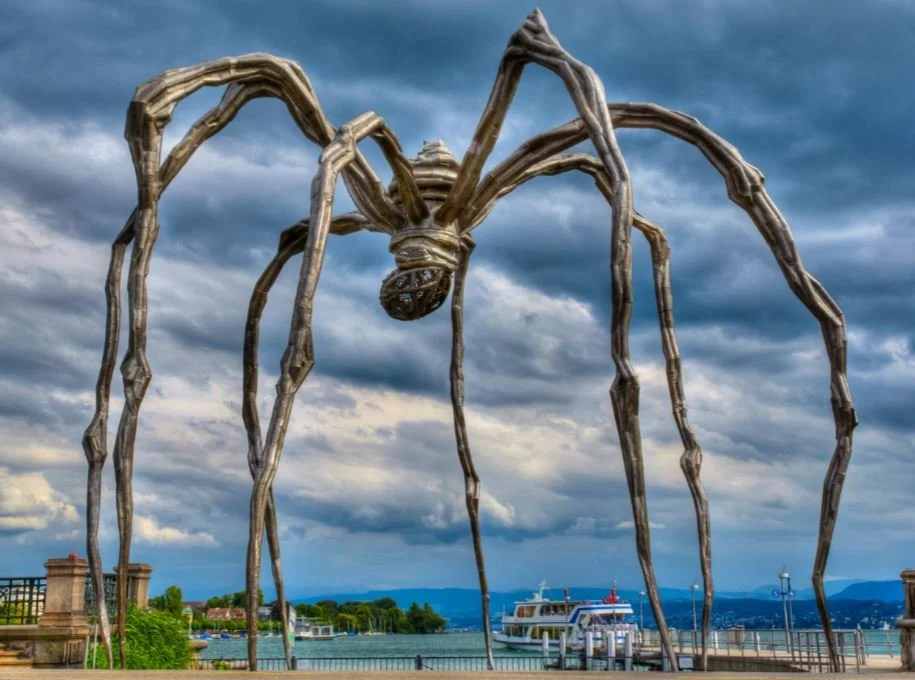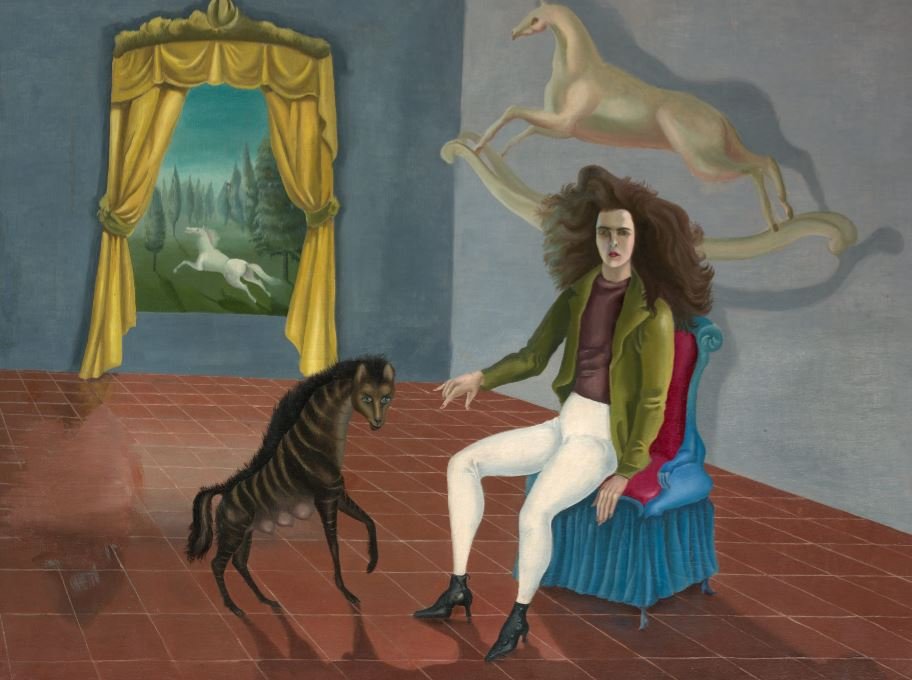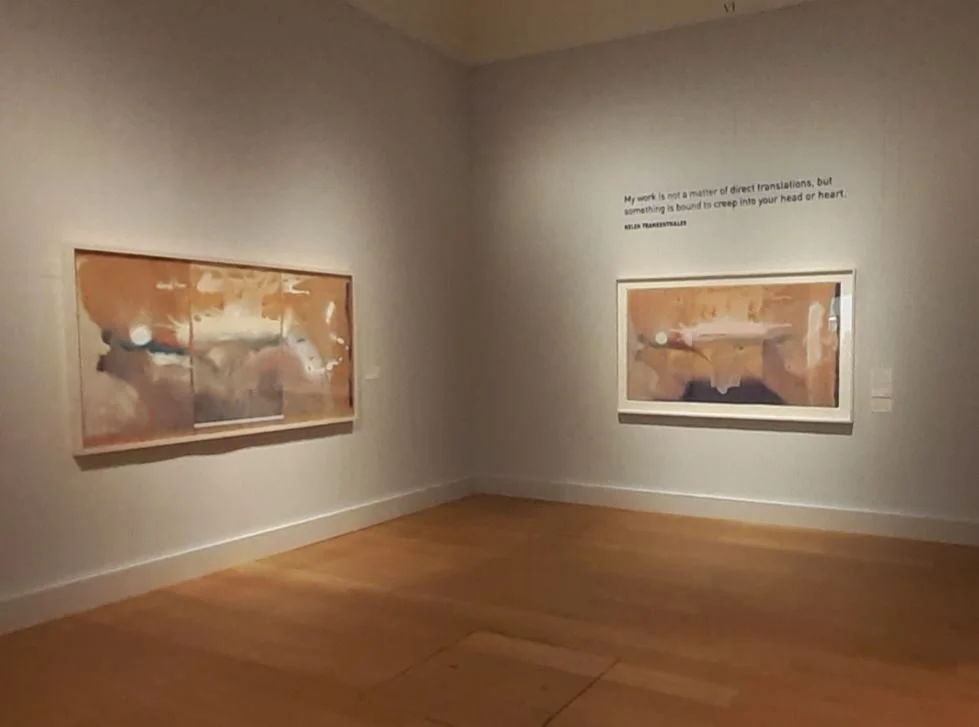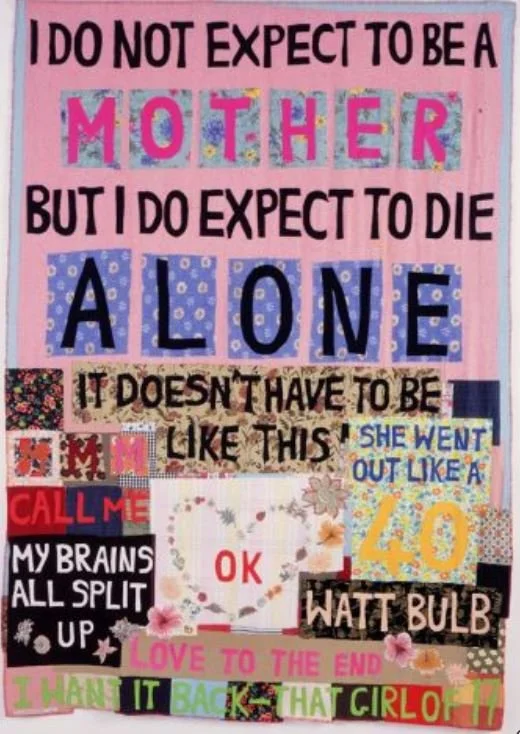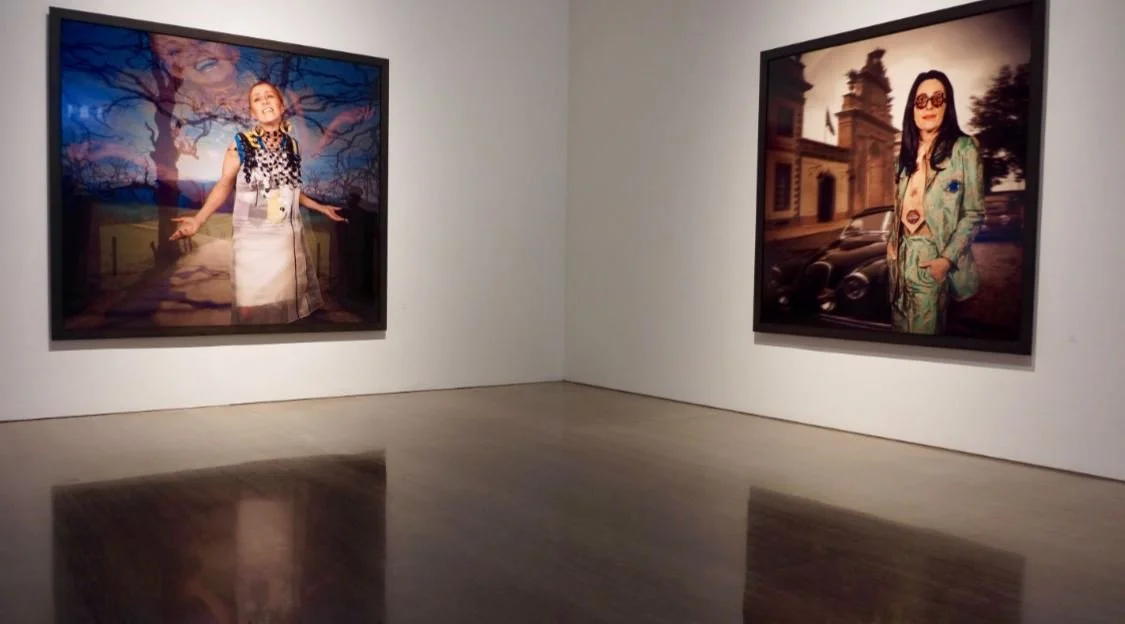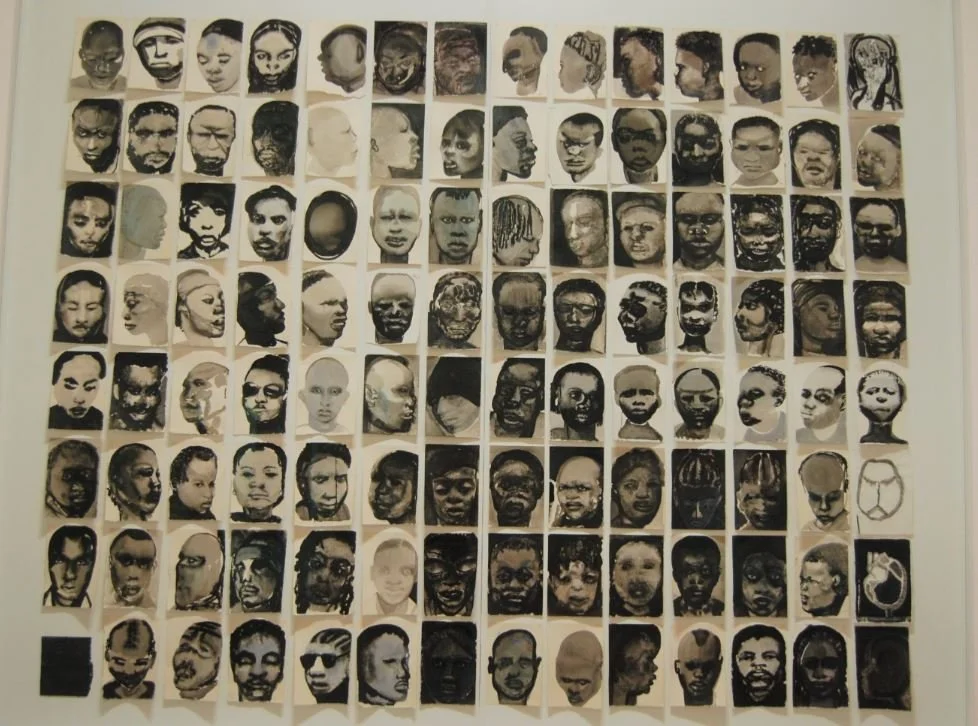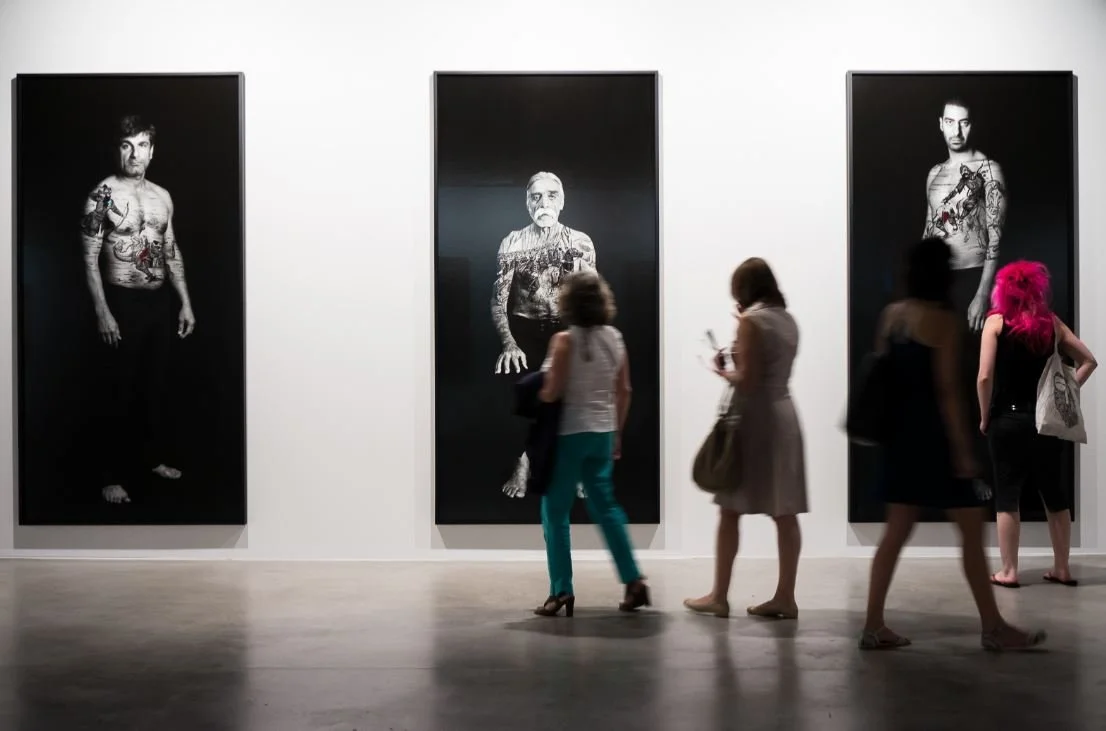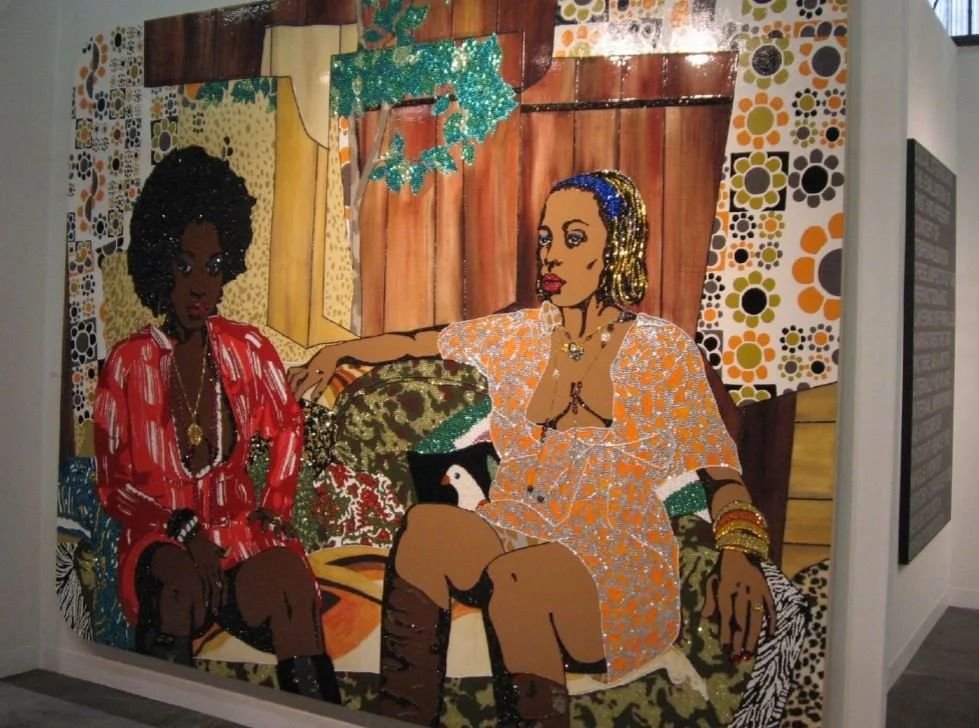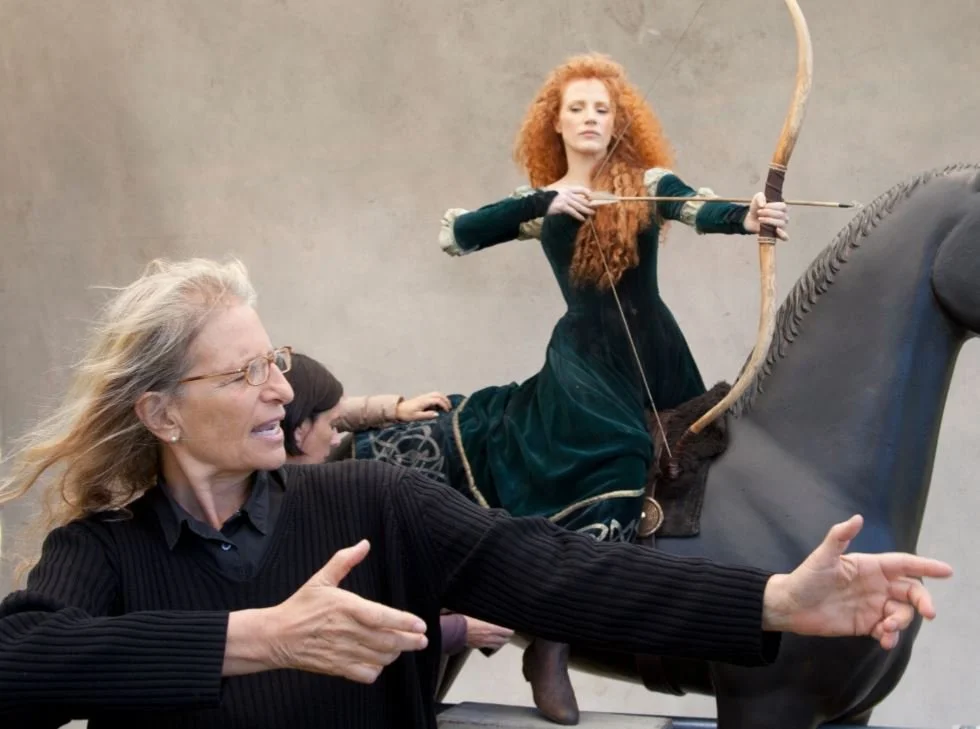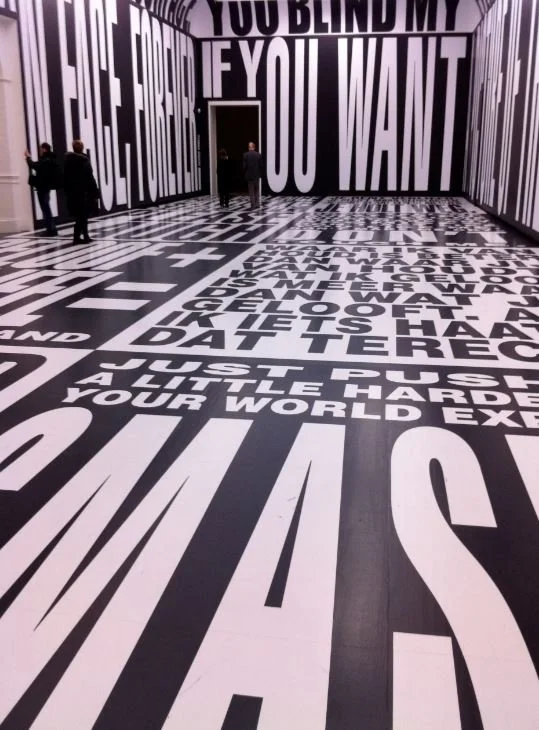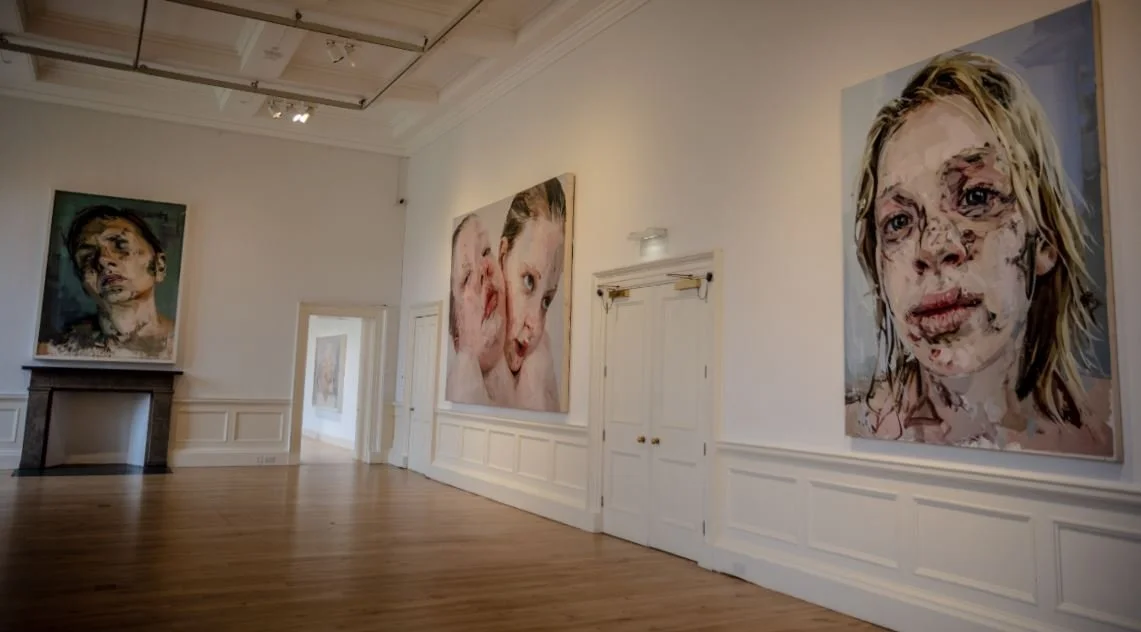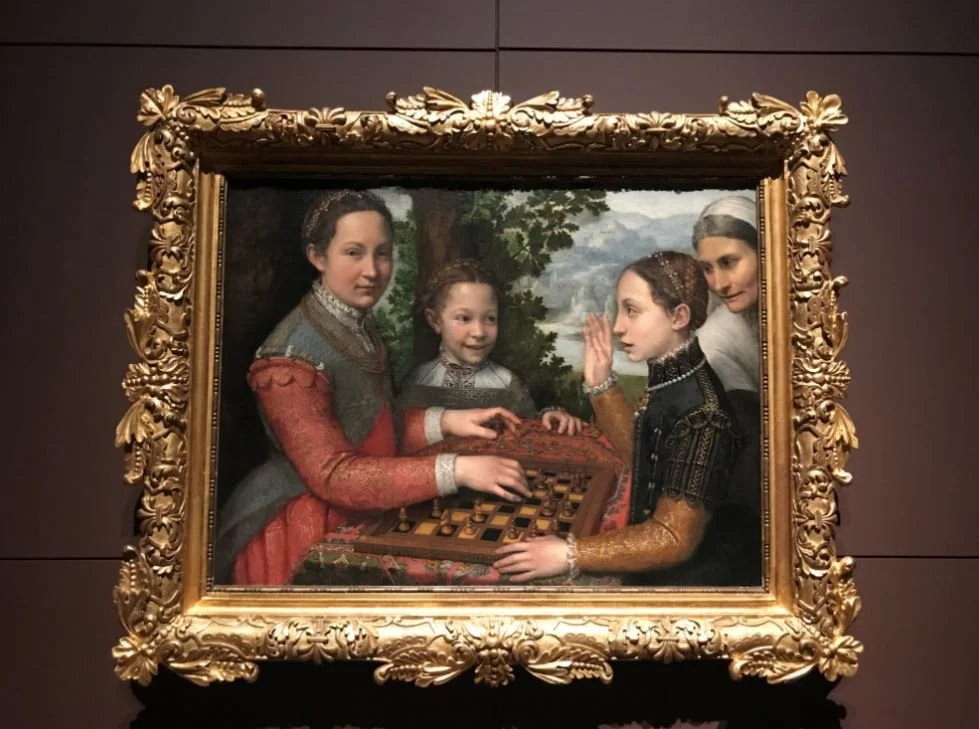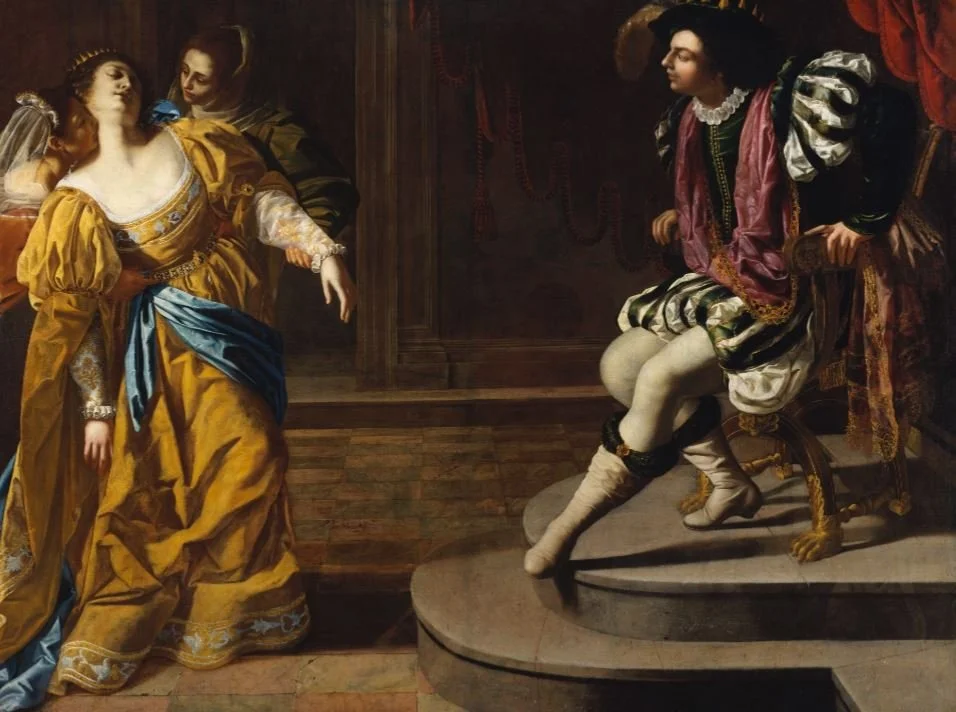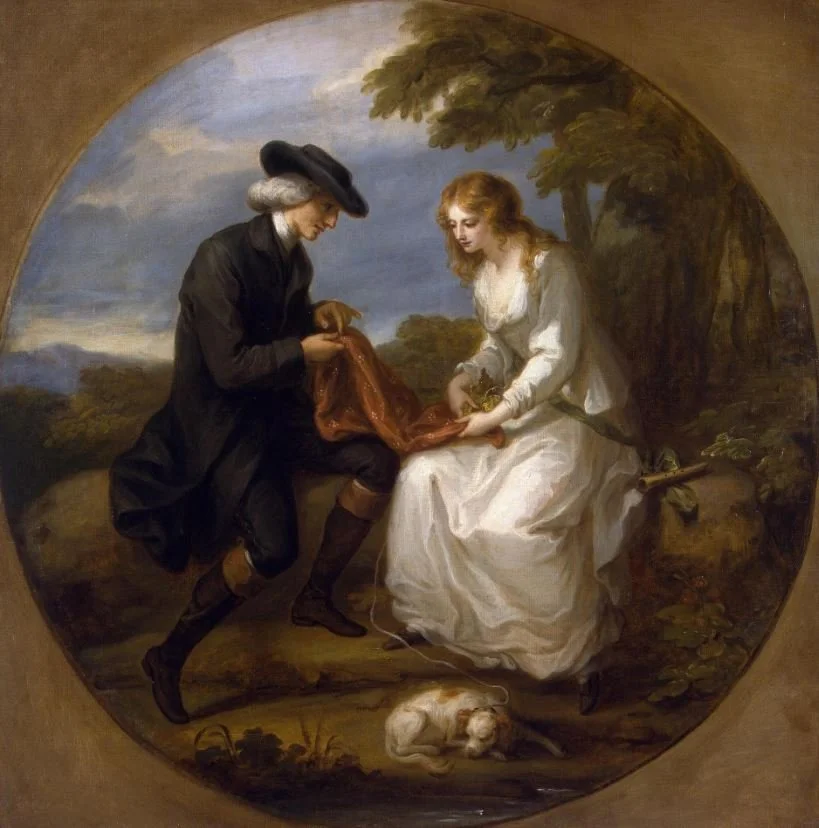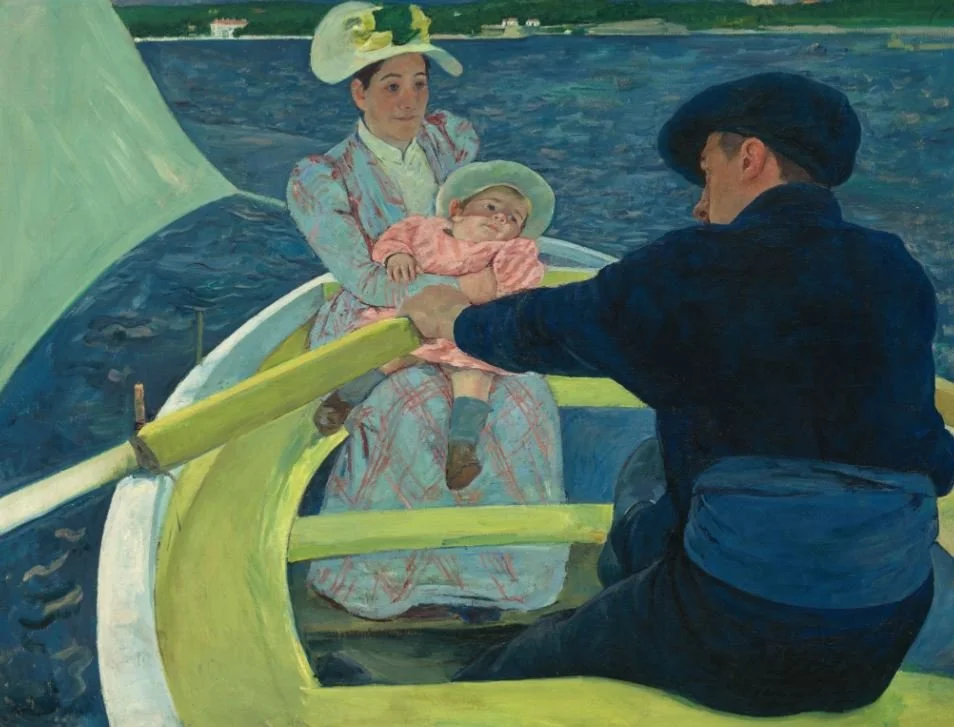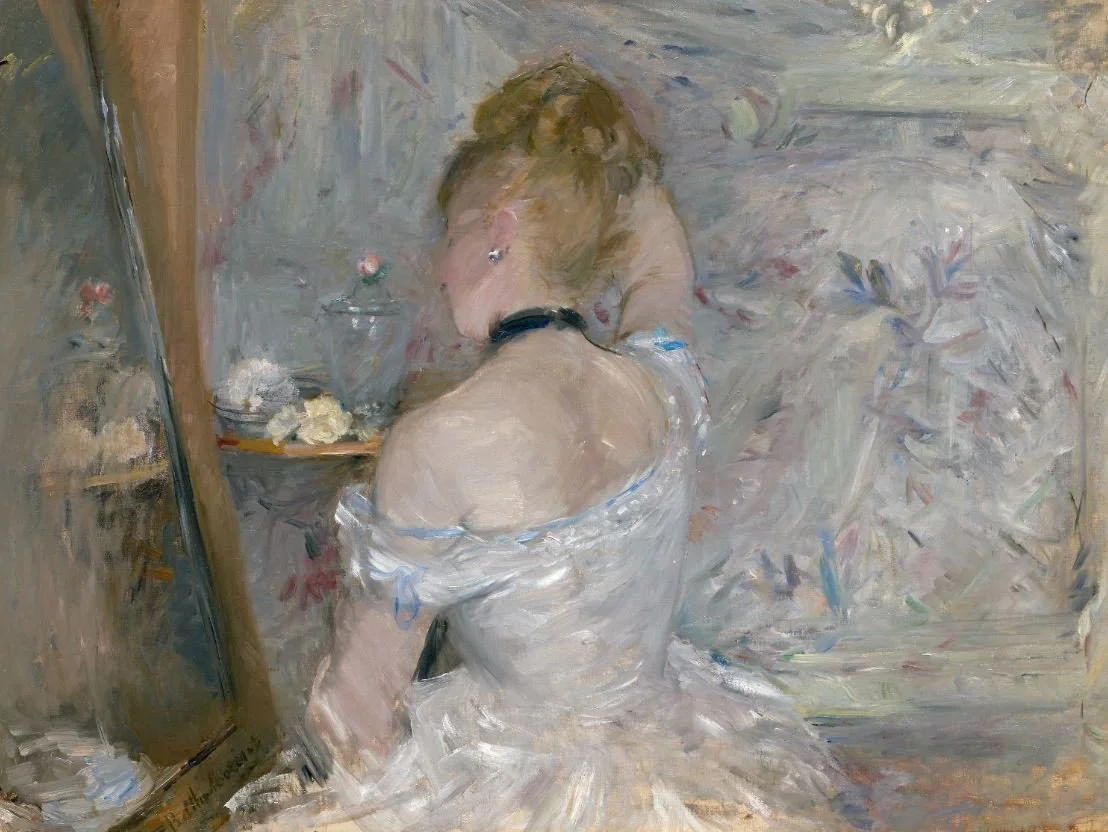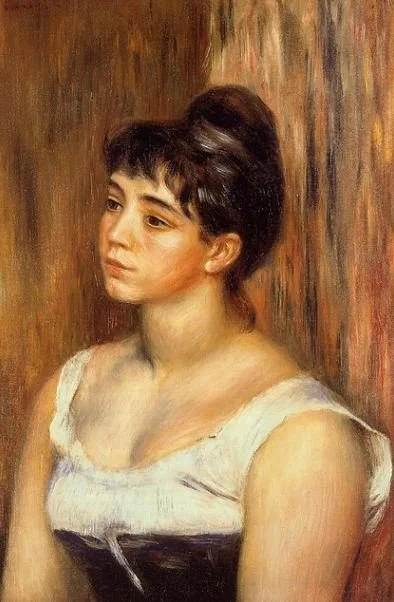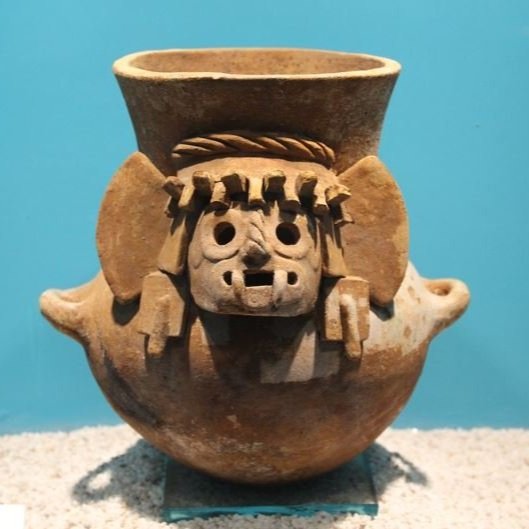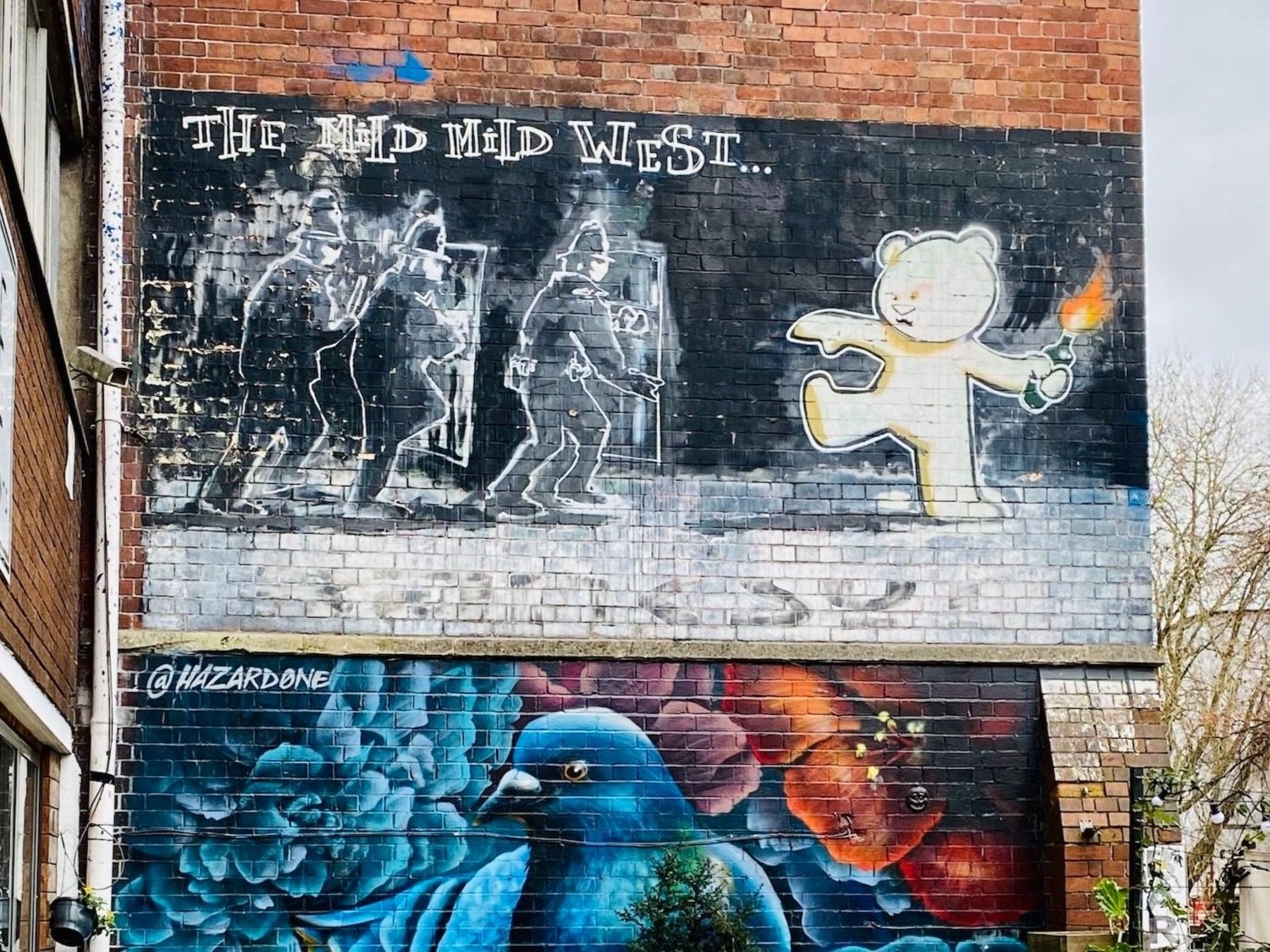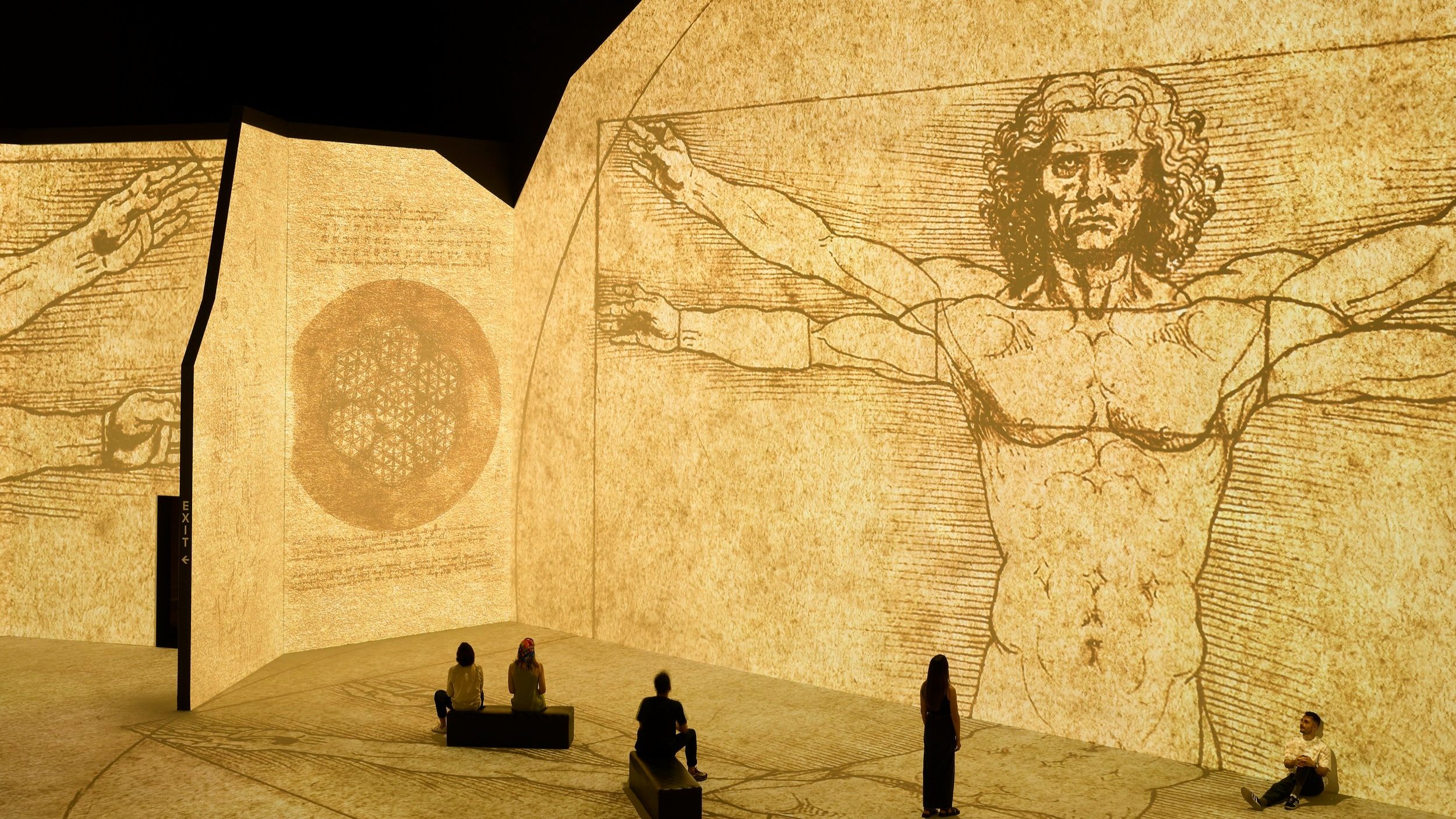Top 30 Most Famous and Influential Female Artists
Throughout history, countless female artists have made significant contributions to the world of art. Often overlooked and marginalised, women faced numerous challenges and barriers in their attempts to break through societal norms and establish themselves as influential figures in the art world.
It is a difficult task to narrow down female artists into one article, but the aim is to explore and celebrate 30 of the most famous and influential female artists who have left an indelible mark on the art scene.
Table of Contents
1. Frida Kahlo
Frida Kahlo, born on July 6, 1907, in Mexico City, was a Mexican artist known for her distinctive and emotive paintings.
Her life was marked by physical and emotional challenges, including a severe bus accident in 1925 that left her with lifelong health issues. During her recovery, she began to explore art as a form of self-expression, eventually becoming one of the most celebrated artists of the 20th century.
Frida Kahlo was actively creating art from the 1920s until her death in 1954. Her artistic journey unfolded during a time of immense personal and political turmoil in Mexico, and her art often reflected her experiences and struggles.
Kahlo's art style was deeply personal and often characterised as surrealist, although she resisted being labelled as part of any specific artistic movement.
Her paintings were characterised by vibrant colours, intricate symbolism, and a unique blend of realism and fantasy. Kahlo's self-portraits, in particular, are notable for their rawness and introspection, capturing her physical and emotional pain, as well as her Mexican heritage and identity. Her art often incorporated elements of Mexican folk art, showcasing her connection to her cultural roots.
Legacy and Influence
Her works explore themes of identity, gender, and the human condition, resonating with audiences across generations. Kahlo's unflinching portrayal of her own pain and vulnerability has made her an iconic figure, admired for her courage and authenticity.
Frida Kahlo’s art continues to have a profound and lasting impact on the art world. Kahlo’s influence on future artists is significant. Her unique style and powerful storytelling have inspired countless artists, particularly those exploring themes of identity and self-expression. Among the artists influenced by Kahlo are Kara Walker, known for her provocative artworks exploring race and gender, and Mickalene Thomas, whose vibrant and bold paintings incorporate elements of portraiture and identity.
Where to View Frida Kahlo's Artwork
Frida Kahlo's artwork can be found in various prestigious institutions around the world. The main places to view her artwork include the Frida Kahlo Museum (also known as Casa Azul) in Mexico City, which was her childhood home and is now a museum dedicated to her life and art. Her works are displayed at the Parrish Art Museum, New York and the Museo Dolores Olmedo, Mexico City, among others. These institutions offer a comprehensive collection of her paintings, providing visitors with an opportunity to immerse themselves in the world of Frida Kahlo. For more details about where to view Frida Kahlo’s work, read here.
For a more detailed look at what Frida Kahlo’s work symbolises, see my article here.
2. Yayoi Kusama
Yayoi Kusama, born on March 22, 1929, in Matsumoto, Nagano, Japan, is a renowned Japanese artist whose innovative and immersive installations have captivated audiences around the world.
Kusama's artistic journey has been influenced by her experiences with mental health issues, and her art often explores themes of infinity, self-obliteration, and the relationship between the individual and the universe.
Yayoi Kusama has been actively creating art since the 1950s, and her career has spanned over seven decades. She gained international recognition in the 1960s when she moved to New York City and became associated with the avant-garde art scene of the time. Kusama's art has continued to evolve and captivate audiences well into the 21st century.
Kusama's art is characterised by her unique style, which often combines elements of Pop Art, Minimalism, and Surrealism.
She is best known for her iconic use of polka dots and repeated patterns, which create a sense of infinite space and blur the boundaries between the viewer and the artwork. Kusama's installations often employ mirrors, lights, and bold colours, creating immersive environments that engage the viewer.
Legacy and Influence
Yayoi Kusama's art has had a profound and lasting impact on the art world. Her immersive installations have redefined the relationship between art and the viewer, inviting active participation and engagement.
Kusama's influence can be seen in the works of numerous contemporary artists. One artist inspired by her is Ai Weiwei, whose installations and conceptual works often challenge social and political norms.
Where to View Yayoi Kusama's Artwork
Yayoi Kusama's artwork can be experienced at various renowned institutions around the world. Notable places to view her artwork include the Yayoi Kusama Museum in Tokyo, Japan, which was established in 2017 and features a dedicated space for her installations. Her works are regularly exhibited at major museums such as the Museum of Modern Art (MoMA) in New York and the Tate Modern in London. Her Infinity Mirror Rooms have proved very popular where ever they have been exhibited.
3. Georgia O'Keeffe
Georgia O'Keeffe, born on November 15, 1887, in Sun Prairie, Wisconsin, was an influential American artist known for her distinctive and pioneering style.
She played a significant role in the development of American modernism and is celebrated for her large-scale paintings of flowers, landscapes, and abstract forms.
Georgia O'Keeffe was actively creating art for nearly seven decades, from the early 1910s until her death in 1986. Her artistic journey spanned the major artistic movements of the 20th century, and she continued to produce remarkable work well into her later years.
She was known for her ability to depict objects in a magnified, close-up manner, often filling the entire canvas. Her iconic flower paintings, such as “Jimson Weed” and “Black Iris”, showcase her meticulous attention to detail and her ability to transform ordinary subjects into abstract and sensual forms.
O'Keeffe's art also explored the vast landscapes of New Mexico, where she lived for many years. Her landscapes, such as “Red Hills, Lake George” and “Black Mesa Landscape, New Mexico”, show her ability to capture the essence of the natural world with a unique sense of colour and composition.
Legacy and Influence
Georgia O'Keeffe's art has had a profound and lasting impact on the art world. Her unique perspective and bold style challenged traditional notions of representation and femininity.
Her influence can be seen in the works of numerous contemporary artists. One artist inspired by O'Keeffe is Judy Chicago, known for her feminist art and exploration of women's experiences. Another artist influenced by O'Keeffe is Elizabeth Peyton, whose intimate portraits and use of colour echo O'Keeffe's ability to convey emotion through simplified forms.
Where to View Georgia O'Keeffe's Artwork
Georgia O'Keeffe's artwork can be viewed at various prominent institutions across the United States. The Georgia O'Keeffe Museum in Santa Fe, New Mexico, is dedicated to her life and work and houses a significant collection of her paintings, drawings, and sculptures. Her works are also exhibited in major museums such as the Museum of Modern Art (MoMA) in New York, the Art Institute of Chicago, and the National Gallery of Art in Washington, D.C.
4. Louise Bourgeois
Louise Bourgeois, born on December 25, 1911, in Paris, France, was a renowned French-American artist who made significant contributions to modern and contemporary art.
She is best known for her profound exploration of themes such as femininity, sexuality, and the complexities of human emotions.
Bourgeois worked with a diverse range of mediums, including sculpture, drawing, painting, and printmaking.
Her sculptures, often large-scale and made from various materials such as bronze, fabric, and marble, explored themes of the body, memory, and relationships. Bourgeois's use of organic and biomorphic forms added an element of abstraction to her work, inviting viewers to delve into the depths of the subconscious and the complexities of human existence.
Legacy and Influence
Louise Bourgeois is recognised as a pioneering figure in feminist art, using her work to challenge societal norms and explore the female experience. Bourgeois's honest and fearless approach to examining the human psyche inspired generations of artists who followed her.
Artists such as Tracey Emin, Sarah Lucas, and Kiki Smith are said to have been influenced by Bourgeois's exploration of the body, identity, and sexuality. Her ability to transform personal experiences into universal themes resonated with many contemporary artists who continue to draw inspiration from her work.
Where to View Louise Bourgeois’ Artwork
Louise Bourgeois's artwork can be viewed in numerous major museums and galleries around the world. The Metropolitan Museum of Art and the Museum of Modern Art (MoMA) in New York and the Tjuvholmen Sculpture Park in Oslo, Norway. Her works are also regularly featured in locations such as the Tate Modern in London and San Francisco Museum of Modern Art.
5. Leonora Carrington
Leonora Carrington, born on April 6, 1917, in Clayton Green, England, was a British-born Mexican artist and writer.
She is best known for her surrealist paintings, sculptures, and writings, which often explored themes of mythology, magic, and the subconscious.
Carrington’s life and artistic journey were marked by a rebellion against societal norms and a relentless pursuit of creative expression.
Carrington’s art style was characterised by its dreamlike imagery, magical symbolism, and meticulous attention to detail. She drew inspiration from mythology, folklore, and her own imagination to create enigmatic and otherworldly works. Carrington’s paintings often featured fantastical creatures, hybrid beings, and mysterious landscapes, inviting viewers into her rich and complex inner world.
Legacy and Influence
Leonora Carrington’s art and unique vision have had a profound impact on the surrealist and feminist art movements. She was one of the few women to actively participate in the surrealist movement, challenging the male-dominated art world of her time. Carrington's unapologetic exploration of female identity and her rejection of societal expectations inspired generations of female artists to embrace their own voices and narratives.
Her work has influenced contemporary artists such as Paula Rego and Kiki Smith, who have been inspired by Carrington’s ability to blend mythology, feminism, and the subconscious. Her legacy as an artist and writer continues to be celebrated and her influence on future generations is profound.
Where to View Leonora Carrington's Artwork
Leonora Carrington's artwork can be viewed in various museums and galleries worldwide, such as the the Arts Centre of San Luis Potosí, which has a dedicated Leonora Carrington Museum, as well as the Tate Modern and Tate Britain, both in London, UK, and the Museum of Modern Art (MoMA) in New York City.
6. Helen Frankenthaler
CC Image courtesy of Luke McKernan, Flickr
Helen Frankenthaler, born on December 12, 1928, in New York City, was an influential American abstract expressionist painter.
She played a significant role in the development of colour field painting, a style characterised by large expanses of vibrant colour applied to the canvas. Frankenthaler's artistic journey was marked by experimentation, innovation, and a profound exploration of the possibilities of colour.
Her breakthrough moment came in 1952 when she developed her signature technique, which involved pouring thin washes of paint directly onto the unprimed canvas. This technique allowed the paint to soak into the fabric, creating a harmonious blend of colour and a sense of atmospheric depth.
Frankenthaler's unique style can be described as a fusion of abstraction and landscape. Her paintings often conveyed a sense of spontaneity, evoking the experience of natural phenomena such as flowing water or changing light.
Legacy and Influence
Helen Frankenthaler’s art had a lasting impact in the realm of abstract expressionism and colour field painting. Her innovative use of colour and her emphasis on the expressive potential of the canvas influenced many artists who followed her, such as Morris Louis, Kenneth Noland, and Jules Olitski, who became known as the “Colour Field” artists.
Where to View Helen Frankenthaler's Artwork
Helen Frankenthaler’s artwork is held in collections at The Museum of Modern Art in New York, the National Gallery of Art in Washington, D.C., the Walker Art Center in Minneapolis, and the Los Angeles County Museum of Art, among others.
7. Tracey Emin
Tracey Emin, born on July 3, 1963, in Croydon, England, is a renowned British contemporary artist known for her provocative and deeply personal works.
Her artistic journey is characterised by a fearless exploration of themes such as sexuality, identity, and vulnerability. Emin's art often blurs the boundaries between art and life, inviting viewers into her intimate experiences and emotions.
Her breakthrough came in the 1990s when she gained significant recognition for her confessional and autobiographical works.
Tracey Emin's unique style can be described as confessional, raw, and emotionally charged. She often incorporates text, drawing, and personal objects into her work, using them as a means of self-expression. Emin's use of personal narratives and unfiltered emotions creates a sense of intimacy and authenticity in her art.
Legacy and Influence
Tracey Emin's art has had a significant impact on contemporary art, particularly in the realm of confessional and autobiographical art. Her unapologetic exploration of personal experiences and her candid approach to taboo subjects have inspired a new generation of artists to embrace their own narratives and challenge societal norms.
Emin's influence can be seen in the work of artists such as Sarah Lucas, Rachel Whiteread, and Gillian Wearing.
Where to View Tracey Emin's Artwork
You will be able to view Tracey Emin's Artwork in Tate Britain in London. Many other museums around the world regularly display Emin’s work.
8. Cindy Sherman
CC Image courtesy of sam.romilly, Flickr
Cindy Sherman, born on January 19, 1954, in Glen Ridge, New Jersey, is an American artist widely recognised for her ground breaking contributions to contemporary photography.
Sherman's artistic journey is characterised by her exploration of identity, gender roles, and the portrayal of women in art and media. Through her self-portraits, she challenges the notion of a fixed identity and investigates the power dynamics of representation.
She uses various techniques to transform herself into different characters, often blurring the line between reality and fiction. Sherman's works are highly staged, with meticulous attention to costumes, props, and settings.
Legacy and Influence
Cindy Sherman's art has been instrumental in shaping the discourse around gender, representation, and the constructed nature of identity. Sherman's ability to challenge conventional notions of femininity and question the male gaze has inspired countless artists to examine and deconstruct societal norms.
Where to View Cindy Sherman's Artwork
Cindy Sherman's artwork is regularly displayed in major museums and galleries worldwide, such as San Francisco Museum of Modern Art in San Francisco and the Museum of Modern Art (MoMA) in New York City.
9. Tamara de Lempicka
Tamara de Lempicka, born Maria Górska on May 16, 1898, in Warsaw, Poland, was a prominent Polish Art Deco artist. Known for her bold and distinctive style, de Lempicka's art captured the glamour and sophistication of the “Roaring Twenties” and the Art Deco era. Her work often depicted elegant figures, showcasing a fusion of modernism, fashion, and a sense of empowerment.
Tamara de Lempicka developed a unique and recognisable style characterised by its sleek, streamlined forms, vibrant colours, and strong geometric composition. Her portraits often featured elongated figures with polished and flawless appearances, exuding a sense of luxury and modernity.
Legacy and Influence
Tamara de Lempicka's art has had a lasting impact on the world of Art Deco and portraiture. Her distinctive style and glamorous subject matter continue to captivate audiences today. De Lempicka's work not only reflected the spirit of the Jazz Age but also challenged societal norms and gender roles, presenting women as powerful and confident beings.
Her influence can be seen in the works of contemporary artists such as Mickalene Thomas, who also explores themes of identity, femininity, and the portrayal of women. De Lempicka's art continues to inspire artists who are drawn to her unique fusion of elegance, modernism, and empowered female representation.
Where to View Tamara de Lempicka's Artwork
Tamara de Lempicka's artworks are held in the collections of the Metropolitan Museum of Art in New York, the Musée des Beaux-Arts de Nantes in France, and the National Museum of Women in the Arts in Washington, D.C., among others. The most extensive collection of her work can be found at the Tamara de Lempicka Museum in Kraków, Poland.
10. Marlene Dumas
Marlene Dumas, born on August 3, 1953, in Cape Town, South Africa, is a renowned contemporary artist known for her evocative and emotionally charged paintings.
Her work explores themes of identity, sexuality, race, and the human condition. Dumas’ art often challenges societal norms and pushes the boundaries of representation.
Marlene Dumas has a distinctive style characterised by her loose brushwork, expressive use of colour, and the ability to capture the psychological depth of her subjects. She often depicts figures, both real and imagined, in a haunting and introspective manner. Dumas works primarily with oil paint, but she also incorporates other mediums such as ink, watercolour, and collage into her artworks.
Legacy and Influence
Marlene Dumas has had a significant impact on contemporary art, particularly in the realm of figurative painting. Her introspective and psychologically charged approach to portraiture has influenced numerous artists who explore the complexities of human emotions and identity.
Where to View Marlene Dumas' Artwork
She has regularly exhibited her artworks at galleries and has had major solo exhibitions throughout the world. Her work has been displayed in the Art Institute of Chicago; Pompidou centre, Paris; Gemeentemuseum, The Hague; Los Angeles County Museum of Art; Museum of Contemporary Art Tokyo; Museum für Moderne Kunst, Frankfurt; The Museum of Modern Art, New York; San Francisco Museum of Modern Art; Stedelijk Museum, Amsterdam; and Tate Gallery, London.
11. Jenny Holzer
CC Image courtesy of usestangerines, Flickr
Jenny Holzer, born on July 29, 1950, in Gallipolis, Ohio, is a renowned contemporary artist known for her ground breaking work in conceptual art and text-based installations.
Her art confronts social and political issues, challenging the boundaries of language and power.
Her career gained prominence in the 1980s when she began using LED displays to showcase her thought-provoking texts in public spaces. She frequently employs concise and powerful phrases, often addressing themes of power, gender, violence, and human rights. Her artworks can be found in a range of mediums, including LED displays, projections, billboards, clothing, and even engraved stones.
Legacy and Influence
Her use of language, public space, and multimedia installations has redefined the possibilities of art as a medium for social and political commentary.
Where to View Jenny Holzer’s Artwork
Jenny Holzer's artwork can be experienced in various public spaces and institutions around the world. Her installations have been featured in prominent venues such as the Guggenheim Museum in New York, the Tate Modern in London, the Museum of Contemporary Art in Los Angeles, and the Whitney Museum of American Art in New York. Her outdoor projects can be found in public spaces, including urban landscapes and architectural landmarks, where her powerful texts engage with viewers in unexpected ways.
12. Marina Abramović
CC Image courtesy of Francesco Pierantoni, Flickr
Marina Abramović, born on November 30, 1946, in Belgrade, Yugoslavia (now Serbia), is a pioneering performance artist known for her boundary-pushing and often physically demanding works.
Throughout her career, Abramović has explored the limits of the human body and mind, challenging conventional notions of art and spectatorship.
Marina Abramović is known for her unique style of performance art, which often involves intense physical and emotional engagement. She has used her own body as the primary medium, subjecting herself to physical challenges, self-imposed rituals, and extended durations of performance. Abramović's performances frequently explore themes of time, presence, and the limits of the human body and consciousness.
Legacy and Influence
Her emphasis on presence, vulnerability, and the transformative power of art has inspired a new generation of performers and artists exploring the boundaries of their own bodies and the connection between artist and audience.
Where to View Marina Abramović's Artwork
Marina Abramović's has performed around the world in all the major cities. In 2023, she presented a new site-specific performance-based exhibition at Modern Art Oxford in Oxford, UK and has an exhibition at the Royal Academy in London until early 2024.
13. Betye Saar
CC Image courtesy of Larry Miller, Flickr
Betye Saar, born in 1926 in Los Angeles, California, is a renowned American artist known for her thought-provoking assemblage art.
Her artistic journey spans several decades, during which she has explored themes of race, gender, spirituality, and identity. Her career emerged during the Civil Rights Movement and has witnessed the transformation of American society, allowing her to address important social issues through her art.
She skilfully juxtaposes items such as dolls, vintage photographs, bottles, and other ephemera to evoke complex narratives. Saar’s use of symbolism and allegory adds depth and ambiguity to her artwork, inviting viewers to engage in critical reflection.
Legacy and Influence
Betye Saar's work challenged prevailing narratives and opened doors for African American artists, particularly women, to express their unique perspectives. She has influenced contemporary artists such as Kara Walker, Mickalene Thomas, and Lorna Simpson, who continue to explore similar themes in their artwork.
Where to View Betye Saar's Artwork
Saar's artwork is held in the collections of the Smithsonian American Art Museum in Washington, D.C., The Museum of Modern Art in New York, the Los Angeles County Museum of Art, and the Walker Art Center in Minneapolis and regular exhibitions are held to display her work.
14. Yoko Ono
Yoko Ono, born in 1933 in Tokyo, Japan, is a ground breaking artist, musician, and activist who has had a profound impact on contemporary art and popular culture. Her artistic journey spans several decades, during which she has pushed boundaries, challenged conventions, and advocated for peace and social change.
Yoko Ono’s art style is known for her innovative and avant-garde approach, using various mediums such as installations, film, music, poetry, and interactive works to explore themes of peace, feminism, and personal introspection. Ono’s art often invites audience participation, encouraging viewers to engage with her work on a deeper level and challenge societal norms.
Legacy and Influence
Yoko Ono’s fearless exploration of political and social issues has inspired generations of artists, particularly in the feminist and performance art movements.
Where to View Yoko Ono’s Artwork
Yoko Ono’s artwork has exhibited in major museums and galleries worldwide.
15. Shirin Neshat
CC Image courtesy of r2hox, Flickr
Shirin Neshat, born in 1957 in Iran, is a contemporary artist known for her thought-provoking and visually stunning works that explore themes of identity, gender, politics, and culture.
Her artistic journey is deeply intertwined with her personal experiences of living in both Iran and the United States, which have shaped her unique perspective and artistic vision.
Her career gained international recognition in the 1990s, and she has since become one of the most celebrated contemporary artists of her generation.
Neshat's art style is characterised by a fusion of photography, video, and installation, often incorporating calligraphy and poetic texts. She is renowned for her black and white portraits of men and women veiled or dressed in traditional Islamic attire, exploring the complexities of gender and power dynamics in Iranian society. Neshat's work often juxtaposes opposing elements, such as tradition and modernity, East and West, and personal and political, creating a sense of tension and ambiguity.
Legacy and Influence
Through her exploration of themes related to cultural identity and the experiences of women in Iran, Shirin Neshat has opened up critical dialogue and challenged societal norms.
Where to View Shirin Neshat's Artwork
Neshat's artwork can be viewed in prestigious institutions and museums around the world. In 2023 she has had exhibitions in New York, Dusseldorf, and Cape Town.
16. Dana Schutz
CC Image courtesy of Jens Cederskjold, Flickr
Dana Schutz, born in 1976 in Livonia, Michigan, is an American contemporary artist.
Schutz gained significant recognition during the mid-2000s. Schutz’s art style is characterised by vibrant colours, expressive brushwork, and imaginative narratives. She often tackles challenging and controversial subjects, exploring themes of identity, politics, and human experience. Her works often blend realism with elements of abstraction, creating a visually captivating and emotionally charged atmosphere.
Where to View Dana Schutz's Artwork
Dana Schutz has had recent solo museum exhibitions in Cleveland, Ohio, the Institute of Contemporary Art, Boston and at The Hepworth Wakefield, England. In 2023, she had a a major solo exhibition at the Louisiana Museum of Modern Art, Humlebaek, Denmark, to June 2023, with another exhibition scheduled for later in 2023 at Musée d'art moderne de Paris.
17. Mickalene Thomas
CC Image courtesy of libby rosof, Flickr
Mickalene Thomas, born in 1971 in Camden, New Jersey, is a renowned contemporary artist known for her vibrant and empowering art.
Thomas' art style is characterised by a combination of bold patterns, bright colours, and intricate details. She often incorporates mixed-media elements such as rhinestones, acrylic, and enamel, adding texture and dimension to her works. Her subjects are predominantly African American women, and she aims to challenge traditional notions of beauty and representation, celebrating the diversity and complexity of black femininity.
Where to View Mickalene Thomas’ Artwork
Mickalene Thomas’ artwork is included in the permanent collection of numerous American museums, including the Art Institute of Chicago, the Museum of Fine Arts in Boston, the Saint Louis Art Museum, the Whitney Museum of American Art in New York, the Detroit Institute of Arts, and the Smithsonian American Art Museum in Washington D. C. among others.
18. Annie Leibovitz
Annie Leibovitz, born in 1949 in Waterbury, Connecticut, is an American photographer renowned for her captivating portraits and documentary-style photography.
Her artistic journey began in the 1970s when she worked as a staff photographer for Rolling Stone magazine. Leibovitz's distinctive style quickly gained attention, propelling her career to new heights.
Annie Leibovitz is known for her unique and evocative style, which often combines elements of portraiture, documentary, and staged photography. Her images possess a certain theatricality, with careful attention to composition, lighting, and narrative.
Legacy and Influence
Annie Leibovitz’s ability to capture the essence of her subjects and tell compelling visual stories has inspired countless photographers and artists worldwide.
Where to View Annie Leibovitz's Artwork
Annie Leibovitz’s iconic photographs can be viewed in various galleries and museums worldwide. The Smithsonian National Portrait Gallery in Washington, D.C., houses a significant collection of Annie Leibovitz’s work. Additionally, her photographs have been exhibited in prestigious venues such as the Art Institute of Chicago, The Museum of Modern Art in New York, and the Los Angeles County Museum of Art.
19. Judy Chicago
CC Image courtesy of Donald Woodman, Wiki Commons
Judy Chicago, born Judy Cohen in 1939, is an American artist, who has made significant contributions to feminist art and the art world at large. Throughout her career, Chicago has been a vocal advocate for the inclusion of women’s voices and experiences in art history.
Judy Chicago’s art is characterised by its bold and provocative nature, often challenging traditional gender roles and patriarchal systems. She employs a range of mediums, including ceramics, needlework, painting, and mixed media, to convey her feminist messages. She is best known for her ground breaking installation artwork, most notably “The Dinner Party”, which has become an iconic symbol of feminist art.
Legacy and Influence
Judy Chicago’s art has reimagined the representation of women in history and inspired many feminist artists. Chicago’s emphasis on collaboration and inclusivity also paved the way for community-based art projects and collective art-making practices.
Where to View Judy Chicago's Artwork
“The Dinner Party”, Chicago's most renowned work, is permanently housed at the Elizabeth A. Sackler Center for Feminist Art at the Brooklyn Museum in New York City. In addition her works are held in collections at Penn State University, the National Museum of Women in the Arts in Washington D.C., and the Arthur and Elizabeth Schlesinger Library on the History of Women in America in Cambridge, Massachusetts.
20. Barbara Kruger
CC Image courtesy of charlotte henard, Flickr
Barbara Kruger, born in 1945, is an American artist known for her powerful and provocative works that blend text and imagery to explore themes of consumerism, gender, and identity.
Her art often features black-and-white photographs overlaid with bold, red text in a distinctive, graphic style. Kruger's work challenges power structures while raising critical questions about the influence of media and advertising on individuals and culture.
She employs graphic design techniques, often using black-and-white photographs sourced from popular culture, and overlays them with concise, provocative statements in a signature font.
Legacy and Influence
Barbara Kruger's art has had a lasting impact on the contemporary art world and has become synonymous with cultural critique and social commentary.
Where to View Barbara Kruger's Artwork
Barbara Kruger's artwork can be found in major museums including the Museum of Modern Art (MoMA) in New York.
21. Jenny Saville
CC Image courtesy of london road, Flickr
Jenny Saville, born in 1970 in Cambridge, England, is a contemporary British artist known for her powerful and visceral depictions of the human body.
Her work challenges conventional notions of beauty and explores themes of gender, identity, and the representation of the female form. Saville gained international recognition in the 1990s for her large-scale paintings that celebrate the corporeal aspects of the body.
Legacy and Influence
Jenny Saville's art has had a significant impact on contemporary figurative painting. Her exploration of the body, its vulnerability, and its imperfections has influenced a new generation of artists who challenge traditional standards of beauty.
Where to View Jenny Saville's Artwork
Jenny Saville's artwork has been displayed at exhibitions in all the major cities including Paris, New York, London and Glasgow to name a few.
22. Sofonisba Anguissola
Sofonisba Anguissola, born in 1532 in Cremona, Italy, was a pioneering Italian Renaissance painter and one of the first internationally renowned female artists.
Her artistic journey began when she received training from local artists in Cremona, and later she became a painter for the Spanish court.
Sofonisba Anguissola developed a style characterised by her ability to capture the personality and inner life of her subjects. She excelled in portraiture, using a delicate and detailed approach to capture the nuances of expression and gesture.
Legacy and Influence
As one of the first recognised female artists, Sofonisba Anguissola opened doors for women to pursue artistic careers.
Where to View Sofonisba Anguissola's Artwork
Sofonisba Anguissola's artworks can be found in several renowned museums and galleries worldwide, such as the Prado Museum in Madrid, Spain, which houses a significant collection of her paintings, including her famous self-portrait. Other institutions that display her works include the Uffizi Gallery in Florence, Italy, and the National Gallery of Art in Washington, D.C.
23. Artemisia Gentileschi
Artemisia Gentileschi, born on July 8, 1593, in Rome, Italy, was an Italian Baroque painter and one of the most celebrated female artists of her time.
Her artistic journey was marked by overcoming adversity and breaking through the barriers imposed on women in the art world. Gentileschi's art reflects her strength, resilience, and remarkable talent, particularly in her powerful portrayals of biblical and mythological subjects.
Gentileschi's art style was characterised by its dramatic compositions, intense emotions, and a keen eye for detail. Her paintings often depict strong and assertive women, and she was particularly skilled at capturing the complexity of human emotions.
Legacy and Influence
Gentileschi's powerful portrayals of women, often victims of violence or injustice, resonated with audiences and became a testament to the strength and resilience of women.
An artist inspired by Gentileschi is Judith Leyster, a Dutch Golden Age painter known for her lively scenes and portraits.
Where to View Artemisia Gentileschi's Artwork
Notable places to see the artwork of Artemisia Gentileschi include the Uffizi Gallery in Florence, Italy, which houses several of her masterpieces, and the National Gallery in London, where her renowned painting “Self-Portrait as the Allegory of Painting” is on display. Additionally, her works are exhibited at the Metropolitan Museum of Art in New York City and the Art Institute of Chicago.
24. Elisabeth Louise Vigée Le Brun
Elisabeth Louise Vigée Le Brun, born in 1755 in France, was a prominent portrait painter of the late 18th and early 19th centuries.
Her career flourished during the French Revolution, and she became the official portrait painter of Queen Marie Antoinette. Despite the tumultuous times, Vigée Le Brun managed to navigate the changing political landscape and create a vast body of work.
Vigée Le Brun's portraits capture the personality of her subjects, often using soft lighting and delicate brushwork. She was particularly skilled at depicting the intricacies of fabric and textures, adding a sense of luxury to her paintings.
Legacy and Influence
Elisabeth Vigée Le Brun’s portraits not only captured the likeness of her subjects but also reflected the changing social and political climate of her time. Her ability to humanise her subjects and convey their inner emotions set her apart from her contemporaries. Vigée Le Brun's success as a female artist during a time when women faced numerous obstacles was a testament to her talent and determination.
Where to View Elisabeth Vigée Le Brun’s Artwork
Her paintings can be found in prominent museums and galleries around the world, including Le Louvre in Paris, the National Gallery in London, and the Metropolitan Museum of Art in New York.
25. Angelica Kauffman
Angelica Kauffman, born on October 30, 1741, in Switzerland, was a prominent Neoclassical painter and one of the few established female artists of her time.
Angelica Kauffman's art style was influenced by the Neoclassical movement, which emphasised classical subjects, harmonious compositions, and a refined aesthetic. Kauffman's works often portrayed historical or mythological scenes.
Legacy and Influence
Angelica Kauffman's work influenced the development of Neoclassical art and contributed to the popularisation of history painting.
Where to View Angelica Kauffman's Artwork
The Angelika Kauffmann Museum is a museum in Schwarzenberg, Austria dedicated to her life and works. Some other notable venues where her paintings are displayed include the Royal Academy of Arts and Tate Britain in London.
26. Mary Cassatt
Mary Cassatt, born on May 22, 1844, in Allegheny City, Pennsylvania, was an American artist who played a significant role in the Impressionist movement. She spent much of her career in France, where she became a prominent member of the Impressionist circle and exhibited her work regularly at the renowned Salon de Paris.
She is known for her intimate and sensitive portrayals of women and children, capturing the essence of everyday life with remarkable skill and emotional depth.
Cassatt's art style was characterised by its emphasis on light, colour, and capturing fleeting moments.
Legacy and Influence
Mary Cassatt played a pivotal role in introducing Impressionism to American audiences and bridging the gap between American and European art.
Where to View Mary Cassatt's artwork
Notable places to see her artwork include the Musée d'Orsay in Paris, France, the National Gallery of Art in Washington, D.C., and the Metropolitan Museum of Art in New York City.
27. Rosa Bonheur
Rosa Bonheur, born on March 16, 1822, in Bordeaux, France, was a prominent 19th-century French artist known for her remarkable talent in depicting animals. Bonheur's dedication to capturing the beauty and spirit of animals made her one of the most celebrated animal painters of her era.
Bonheur's works exuded a sense of energy and vitality, revealing her deep connection with the animal world.
Legacy and Influence
Bonheur's realistic approach to animal painting influenced numerous artists who followed in her footsteps. One artist inspired by Bonheur is Sir Edwin Landseer, an English painter known for his animal subjects. Additionally, her influence can be seen in the works of modern-day artists such as Walton Ford, who combines natural history and art to create intricate animal paintings.
Where to View Rosa Bonheur's Artwork
The Musée d'Orsay in Paris, France, and the Metropolitan Museum of Art in New York display some of Bonheur's works.
28. Hilma af Klint
CC Image courtesy of Ryan Dickey, Wiki Commons
Hilma af Klint, born on October 26, 1862, in Stockholm, Sweden, was a pioneering Swedish artist known for her abstract and spiritually inspired paintings.
Despite being relatively unknown during her lifetime, af Klint's art is now recognised as ahead of its time. Hilma af Klint developed a unique artistic style characterised by abstract geometric forms, vibrant colours, and intricate symbolism. Her work challenged traditional art of the time and explored themes of spirituality, symbolism, and the connection between the visible and invisible realms.
Af Klint often worked in large-scale formats, creating series’ of paintings that were meant to be exhibited together as cohesive narratives.
Legacy and Influence
Her work predates the movements of abstract expressionism and geometric abstraction by several years. Although her art remained largely unrecognised during her lifetime, af Klint's visionary approach to artmaking has inspired generations of artists.
Where to View Hilma af Klint's Artwork
The largest collection of her work is housed at the Hilma af Klint Museum in Stockholm, Sweden. Her works are also exhibited at Tate Modern in London, UK, Neue Nationalgalerie, Berlin, and the Museum of Modern Art (MoMA), New York
29. Berthe Morisot
Berthe Morisot (1841-1895) was a French painter and a prominent figure in the Impressionist movement. Born into a family of artists, Morisot received formal training and exhibited her work at the prestigious Salon de Paris.
She developed a close association with fellow Impressionist painters, including Édouard Manet. Morisot had a dedication to capturing the fleeting effects of light, colour, and atmosphere, particularly in her portrayals of domestic scenes and landscapes.
She often depicted intimate scenes of women, children, and domestic life, offering a glimpse into the private sphere.
Legacy and Influence
As one of the few women artists associated with the Impressionist movement, Morisot broke barriers and paved the way for future generations of female artists. Her sensitive portrayal of women’s experiences and her unique artistic style inspired countless artists, both male and female, who sought to capture the fleeting beauty of everyday life.
Where to View Berthe Morisot's Artwork
Berthe Morisot's artwork can be viewed in locations such as The Musée d'Orsay in Paris, the National Gallery of Art in Washington, D.C. and the Art Institute of Chicago.
30. Suzanne Valadon
Suzanne Valadon, born Marie-Clémentine Valadon in 1865, was a French painter and artist's model. Her life and artistic journey were marked by unconventional choices and a pioneering spirit. Valadon started her artistic career as a model for renowned painters, including Pierre-Auguste Renoir and Henri de Toulouse-Lautrec. However, she transitioned to become a self-taught artist and achieved significant recognition for her own unique artistic style.
Her paintings often depict intimate and domestic scenes, as well as landscapes and still life. Valadon's unique perspective as a former artist’s model allowed her to bring a fresh and authentic portrayal of the human body to her work.
Legacy and Influence
She defied expectations and forged her own artistic path, inspiring future generations of female artists to pursue their creative aspirations. Valadon's work influenced the development of modern art, particularly in the representation of the female form.
Where to View Suzanne Valadon's Artwork
Suzanne Valadon's artwork can be viewed in various museums and galleries around the world. Some notable institutions that exhibit her work include the Musée d'Orsay in Paris, the Metropolitan Museum of Art in New York, and the Fine Arts Museum in San Fransico.
I hope you have found my list of famous female artists useful. I would love to hear your thoughts or if you feel one of your favourite artists is missing from the list, please email me and let me know at sarahransomeart@gmail.com.
